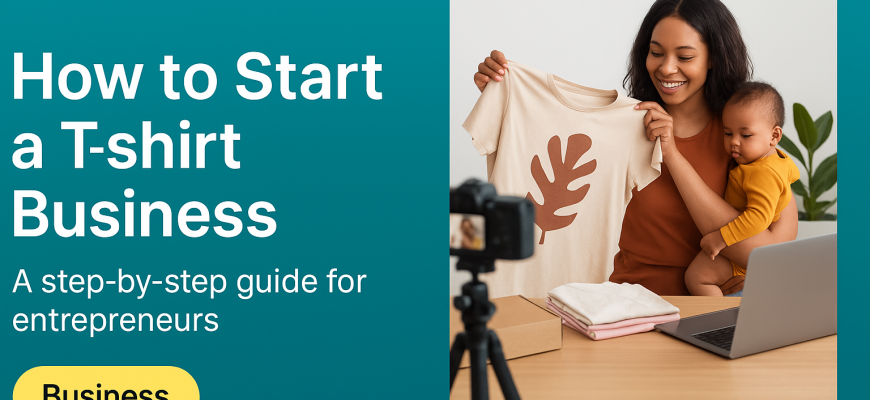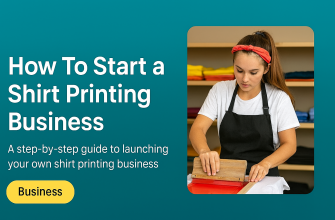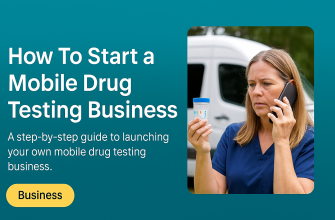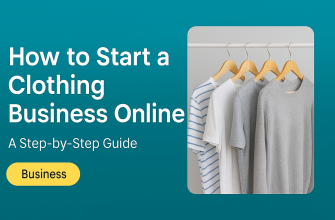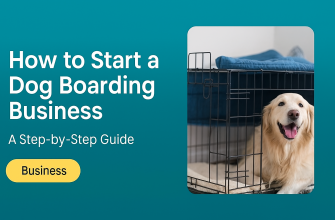Hello, lovely! I’m so excited you’re here, ready to turn your T-shirt dreams into reality. Whether you’re a busy mama balancing kiddos and a business idea, or a passionate woman craving a creative side hustle, launching a T-shirt business could be the perfect venture for you. In this guide, I’ll walk you through everything – from sparking that first idea to managing your time as a mompreneur. It’s part inspirational pep talk, part practical roadmap, all in one. Let’s do this!
- Why a T-Shirt Business Is a Great Idea for Women Entrepreneurs
- Business Models: Print-on-Demand, Inventory, and Local Sales
- Step-by-Step Guide to Launching Your T-Shirt Business
- Budget-Friendly Tools and Resources for a Successful Start
- Marketing Your T-Shirt Brand & Building Your Community
- Balancing Business and Motherhood: Time Management & Self-Care
- You’ve Got This, Mama! (Final Thoughts)
Why a T-Shirt Business Is a Great Idea for Women Entrepreneurs
Starting a T-shirt business can be incredibly empowering for us as women entrepreneurs. Here’s why this path is especially awesome for women (yes, including all the multitasking moms out there):
-
Low Barrier to Entry: You don’t need a fancy degree or a huge bank account to start. In fact, the custom t-shirt market is booming – it’s worth over $5 billion and expected to grow around 11% each year through 2030. Translation: there’s plenty of room for new female creators like you! With modern tech, it’s easier than ever to jump in. (Think about it – our grandmothers couldn’t just design shirts and sell them worldwide from home, but we can.)
-
Flexible and Family-Friendly: A T-shirt business can be run from your laptop at home, meaning you set your hours. This flexibility is a game-changer, especially if you’re balancing motherhood. You can work during nap times or after bedtime, and pause whenever life gets hectic. Unlike a 9-to-5 job, you’re the boss – so if a kiddo gets sick or you need a self-care afternoon, you have the control.
-
Creative Expression & Purpose: T-shirts are like wearable canvases. You can design shirts that express messages you care about – whether it’s feminist quotes, mom humor, inspirational slogans, or art for a cause. It’s your voice on fabric. This creative outlet can be so fulfilling, and it allows you to connect with others who love the same ideas. Every shirt can tell a story or spark a smile.
-
Empowerment & Independence: There’s nothing quite like earning income on your own terms. Even if you start small, a t-shirt side hustle can boost your confidence and financial independence. It might even grow into a full-time business. (Imagine showing your kids that mom built something all by herself – what a powerful example of following your dreams!)
-
Community & Trend: You’re not alone in wanting to start a business. A recent survey found that one in six moms is now interested in starting a business (and 60% of women with children are exploring entrepreneurship). That’s a lot of mompreneurs on the rise! Entrepreneurship is becoming more accessible and common for women everywhere. And specifically, T-shirts are a popular, ever-trendy product – people love buying unique tees. So you’ll be riding a wave that’s already moving.
Plus, thanks to digital tools and social media, the barriers to entry are lower than ever. We have free or affordable resources (from design apps to online storefronts) that our mothers never dreamed of. These tools make it possible to design, market, and sell products right from home. In short: a T-shirt business is totally doable with limited capital and a lot of heart. Now, let’s talk about how exactly you can make it happen.
Business Models: Print-on-Demand, Inventory, and Local Sales
Before diving into design and branding, you’ll want to decide on a business model for your T-shirt venture. There are a few ways to go about selling T-shirts, and each has its pros and cons. Let’s break down the three main models in simple terms:
-
Print-on-Demand (POD): This is the queen of low-risk models. With POD, you partner with a service (like Printful, Printify, or Gelato) that prints and ships shirts for you only when someone orders. You don’t have to buy a bunch of shirts upfront or hold any inventory. In fact, customers pay for the product after you make a sale, so there are no upfront costs – perfect if you’re launching with limited capital. The POD company handles printing and shipping behind the scenes while you focus on designing and marketing. Pros: Minimal startup cost, no need to store inventory at home, and you can offer lots of designs/colors without financial risk. Cons: Slightly lower profit margins (since the POD service takes a cut or charges per item) and a bit less control over packaging/shipping times. But overall, POD is fantastic for beginners and busy moms because it’s so hands-off with the logistics.
-
Inventory-Based (DIY or Bulk Ordering): This is a more traditional route – you either print the shirts yourself at home or bulk-order inventory from a printer, then handle the sales and shipping. For example, you might buy a heat press or vinyl cutter to make shirts in your garage, or you find a local screen-printing shop to produce, say, 50 shirts of your design, and you keep that stock to sell. Pros: Potentially higher profit per shirt (buying in bulk is cheaper per unit), full control over quality, packaging, and branding (you can include thank-you notes, custom tags, etc.). Some women love the hands-on aspect of making their products. Cons: Higher upfront cost – you have to pay for equipment or inventory before you’ve sold anything. There’s a risk of unsold stock sitting in your closet. It also requires space to store shirts and time to pack and ship orders yourself. This model can be rewarding but is a bigger commitment in money and time (which might be tough when you’re juggling family duties).
-
Local Sales (Pop-ups and Markets): Who says a T-shirt business has to be online? You can sell in person at local craft fairs, farmer’s markets, community events, or pop-up shops. Many mompreneurs start by selling in their local community. You’ll typically need some inventory on hand (even if it’s just a small batch of each size) and maybe a nice booth/display. Pros: Immediate customer feedback and connection (you can see people’s reactions, chat with them, build local fans), no need to worry about shipping, and you get cash in hand on the spot. Great for building a local brand community. Cons: Limited by geography and event schedules – you only sell when/where you have a venue. You still have upfront costs for inventory (and possibly booth fees). It also means committing time on weekends or evenings to be physically present at sales events, which can be tricky with kids. However, this can be a fun way to start small – for instance, selling at a school fundraiser or mom’s group meetup to test your designs.
Can you do a mix? Absolutely! For example, you might use print-on-demand for your online orders and also keep a small inventory of best-sellers for local fairs. Or start POD to minimize risk, then switch to holding inventory of your top sellers once you know what designs are hits. The key is to choose what fits your life and budget. If you have almost no capital and need max flexibility – POD is likely your best friend. If you have a bit of money to invest and love the idea of hand-packaging orders or selling face-to-face – inventory or local routes could work. There’s no wrong answer; it’s about what makes you comfortable and excited.
Now that you know the main models, let’s get into how to actually launch this thing, step by step.
Step-by-Step Guide to Launching Your T-Shirt Business
Starting a business can feel overwhelming, but we’re going to break it down into manageable steps. Take it one step at a time, and before you know it, you’ll be up and running! Here’s a roadmap to guide you from idea to launch:
-
Find Your Niche and Purpose: First, brainstorm what kind of T-shirt brand you want to be. Ask yourself: Who do I want to wear these shirts? What vibe or message do I want to spread? Successful T-shirt businesses usually have a clear niche or theme. Maybe you’ll make empowering feminist tees, faith-based shirts, funny mom life shirts, yoga-inspired designs, or eco-conscious slogans. The possibilities are endless, but try to be specific. For example, “T-shirts for cat-loving moms” or “quirky graphic tees for teen girls into science fiction” is easier to target than “shirts for everybody.” Choosing a niche helps you stand out in a crowded market. It also makes design and marketing decisions easier because you have a defined audience in mind. So, take some time to define your purpose and passion here. (Tip: If you’re not sure, think about what communities you belong to or care about – that’s a great place to start looking for a niche.)
-
Craft Your Brand (Name, Story & Branding): Now that you know your niche, come up with a fabulous brand name and story. Your brand should reflect you and attract your target customers. Think of a name that’s catchy, easy to remember, and meaningful to your theme. If you’re focusing on mom life, maybe something playful like “MamaTees” or heartfelt like “HerStory Shirts.” If you’re feeling stuck, jot down a bunch of words you love related to your niche and play with combinations. Once you have a name, consider your brand colors, logo, and overall style. You can make a simple logo yourself using free tools like Canva or even just a cool font styling of your brand name. Don’t overthink this part – you can always refine as you go. The goal is to have a cohesive feel. Also, figure out your brand’s story: why are you starting this business? For example, “I’m a mom of three who never found shirts that celebrated the chaos and humor of motherhood, so I decided to create my own!” Sharing your personal mission will resonate with customers and build an emotional connection. People love buying from brands with a story and a heart behind them – especially when supporting a fellow woman entrepreneur.
-
Choose Your Business Model and Source Your Shirts: This is the decision we discussed in the last section. At this stage, decide how you’ll produce and deliver your T-shirts. If you’re going with print-on-demand, research a reputable POD platform (Printful, Printify, TeeSpring, etc.) and sign up for an account. Many have integrations with selling platforms and even tutorials to get started. If you opt for an inventory-based approach, start sourcing supplies: find wholesalers for blank T-shirts (popular quality brands are Bella+Canvas, Next Level, Gildan, etc.), and look into printing methods. You might compare prices from local print shops or consider buying a small heat-press machine if you want to DIY (there are starter kits on Amazon and tons of YouTube tutorials for printing at home). For local sales, perhaps connect with a local printer or prepare the equipment to make a small batch of shirts to sell at your first event. The key is to keep costs low at the start. Negotiate small quantities or use print-on-demand initially to avoid overspending. Remember, you can always scale up later. At this step, also think about pricing and basic finances: estimate your cost per shirt (production + fees) in each model so you can price your products with a profit margin. (We’ll fine-tune marketing next, but always good to know your numbers early on.)
-
Design Your T-Shirts: Now the fun part – creating designs! Don’t be intimidated if you’re not a professional artist. There are so many resources to help non-designers (and hey, if you are a designer, you’ll love this part!). Here are some approaches:
-
DIY Design Tools: Canva is a fantastic free (and easy) design tool, and it has templates and graphics you can use for T-shirts. Other free tools include Photopea (a free Photoshop-like web app) or GIMP. Even PowerPoint or Word can work in a pinch for basic text designs! If drawing is involved, an iPad with Procreate or simply pen and paper (then scan) could do. Many print-on-demand services also have built-in design generators or allow you to add text and stock images.
-
Purchase or Use Free Graphics: You don’t have to draw everything from scratch. Websites like Creative Market or Etsy sell ready-to-use T-shirt design graphics and fonts. There are also free resources like Unsplash (for photos) or free font sites. Just always check the license to ensure you can use them on products for sale.
-
Hire Help (if needed): If you have ideas but can’t execute them, consider hiring a freelance designer for relatively cheap. Websites like Fiverr or Upwork have designers who can create a simple T-shirt graphic for you at reasonable rates. You can also collaborate with an artist friend or even your kids if they’re artistic (cute kid-drawn designs can be a selling point!).
Start with a small collection of maybe 3-5 solid designs that fit your niche and brand vibe. For each design, consider how it will look on different shirt colors and on a human body (not just as a flat image). Create mockups – many tools (including Canva and POD platforms) let you put your design on a shirt image to see how it looks. This helps you and your future customers visualize the final product. Important: Don’t strive for perfection in the beginning. Get some designs done and get feedback. Even simple text-based designs can sell like hotcakes if the message resonates. Also, remember: you don’t need formal training to succeed at this. Many successful T-shirt mompreneurs started with zero graphic design experience. It’s the determination and creativity that counts more than a fancy art degree. As one mompreneur put it, “the sheer determination to be successful is much more important than formal knowledge.” She began her online store without knowing how to use Photoshop, learned the basics from her son, and grew her design skills over time. You can learn as you go, too – so don’t let lack of experience stop you from creating designs.
-
-
Set Up Your Online Store or Sales Channel: With designs in hand, it’s time to pick where you’ll sell your shirts and set up shop. You have a few options, and you can even pursue more than one:
-
Online Marketplace (Etsy, Amazon Handmade): Etsy is a popular choice for many women starting out because it’s user-friendly and you tap into an existing marketplace where people are already searching for tees. It does have small fees (listing fee + commission on sales), but the upfront cost is very low. Amazon Merch on Demand (formerly Merch by Amazon) is another avenue – Amazon handles production (POD) and you get access to Amazon’s huge customer base, though approval is needed and design guidelines are strict. These marketplaces handle a lot of the technical stuff and traffic, which is great if you’re not super techy and want instant exposure.
-
Your Own Online Store (Shopify, Wix, etc.): If you want to build your own brand site, platforms like Shopify are excellent. Shopify has a free trial and lots of plugins (including easy integration with POD services). Wix, Squarespace, or WooCommerce (WordPress) are other options. Setting up your own site gives you full control over branding and customer experience. It might require a bit more learning (nothing some late-night YouTube tutorials can’t solve!). Cost-wise, this route has a monthly fee (Shopify starts around $29/mo, Wix maybe similar), so consider that in your budget. The upside is you look professional and can eventually scale your site however you want.
-
Social Media Shops: You can also sell directly via social media! Instagram and Facebook allow shop features where people can buy your products. This can be convenient once you have a following. Even without a formal “shop,” I’ve seen mompreneurs simply post designs on Instagram and take orders via DM or a PayPal link when starting out – essentially a manual but free way to make those first sales.
-
Local/In-Person Setup: If you’re going the local sales route, your “setup” might be preparing a nice booth or table. Invest in a few samples of each design to display. You might need things like a clothes rack, mirror (if at events where people might try on), business cards or flyers, and a way to accept payments (apps like Square or PayPal Here let you take credit cards on your phone). Also, set up social media pages for your brand even if selling locally, so local fans can follow you and know where you’ll pop up next.
For an online store or marketplace, you’ll want to upload your T-shirt designs, write compelling product descriptions, and set your prices. Write descriptions as if you’re talking to your ideal customer – highlight what’s special (e.g. soft cotton, empowering message) and suggest how or where they might wear it (“This cute tee is perfect for proud boy moms on the go…”). Also, take advantage of any categories or tags (e.g. on Etsy use tags like “mom life shirt”, “funny mom tee”). If you’re using a POD integration, make sure it’s properly linked so that orders will automatically forward to your POD provider for fulfillment. Do a couple of test orders (even if just you buying your own shirt at cost) to ensure the process flows smoothly. It’s super exciting to see your online storefront come to life with your products!
-
-
Handle the Business Basics (Budget, Legal, etc.): I know, I know – this part isn’t as fun as design or social media, but it’s important. Being a boss means covering your bases:
-
Business Registration: Check what’s required in your location. Many small T-shirt startups begin as a sole proprietorship (which in many places doesn’t require heavy paperwork – you can often just start using your own name or a “DBA” name). If you want, you can register a DBA (Doing Business As) for your brand name, or even form an LLC for liability protection once you start growing. It might be worth consulting local small business resources or websites for specifics. Don’t let this step scare you – for a small home-based business, it’s usually not too complicated.
-
Taxes & Finances: Open a separate bank account (even just a separate checking account) for your business income/expenses – this helps a lot with tracking money. Keep receipts of your business-related purchases (shirts, software, website fees, etc.) because many are tax-deductible. If you start making sales, remember you may need to report that income on your taxes. It could be worth talking to an accountant once things pick up, but at the start, just keep good records.
-
Budget Planning: Since we’re focusing on limited capital, outline a small budget. Decide how much you can afford to invest upfront (maybe $0 to $500, whatever is comfortable without straining your family budget). Allocate it to things like: initial product samples or inventory, website fees or Etsy listings, marketing (maybe running a small ad or paying for a logo design), and so on. The goal is to start lean. With POD, you might get away with spending almost nothing upfront besides perhaps ordering a sample for yourself (which is actually a good idea to check quality). With inventory, set a cap like “I’ll invest $200 in initial stock and no more until I sell those.” Stick to your plan to avoid overspending. We’ll talk marketing next, but remember many marketing strategies (social media, word of mouth) are free or low-cost.
-
Setting Policies: If selling online, decide on shop policies like shipping (e.g. made-to-order items might ship in 1-2 weeks), returns/exchanges (e.g. you might only accept exchanges for size issues, etc., especially if using POD since returns can be tricky). It’s good to have those stated on your site or Etsy shop to set customer expectations. Again, you can mimic what other small T-shirt sellers do by checking their shop pages.
Don’t get overwhelmed by this “business” stuff – take it step by step. Many of us learn as we go. The important part is to treat your venture like a business (even if it’s a side-hustle) because that mindset will help you make smart decisions. And guess what? By reading this, you’re already doing the learning – you got this!
-
-
Launch and Spread the Word: Time to let the world (or at least your world) know about your amazing T-shirt brand. Launch doesn’t have to mean a big fancy event; it can simply mean the day you publish your Etsy shop or website and announce “we’re open!”. Here are some tips for a strong launch:
-
Soft Launch: Consider a soft launch to friends and family first. Send a friendly message or social post saying, “Hey, I started a little T-shirt biz! Check it out.” These are your cheerleaders; they’ll likely share encouragement, give feedback, and maybe be your first customers. You can even offer a “friends & family” discount code for the first week. This gentle launch lets you test the waters and make sure everything is working (links, checkout, etc.) before you promote more widely.
-
Social Media Announcement: Post on your personal social media and any business pages you created. Share the why behind your brand again. For example: “After months of planning, I’m thrilled to launch MomLife Tees – a T-shirt line inspired by the beautiful chaos of motherhood. This has been a labor of love created during nap-times and late nights. I’d appreciate your support – check out my designs [link] and let me know your favorite!” Authenticity resonates. Your story of being a mompreneur or a woman chasing a dream is compelling content in itself.
-
Consistency from Day One: As you launch, plan how you will keep up the momentum. Even if you can only dedicate a couple hours a day or a few hours a week, consistency is key. Maybe you’ll post new content on your brand’s Instagram 3x a week, or you’ll attend one local market a month. Having a schedule (however modest) will help you steadily grow rather than fizzle out after the initial excitement.
-
Celebrate! Girl, launching a business (no matter how small) is a big deal. Many people just talk about ideas but never take action – but you did it! So celebrate this milestone. Do a happy dance, treat yourself to a fancy latte or a bubble bath, and acknowledge what you’ve accomplished. This positive reinforcement will fuel you for the next steps as an entrepreneur.
-
By following these steps, you’ve essentially set the foundation of your T-shirt business. Give yourself grace if not everything is perfect; each step is a learning experience. Now, with your business up and running, it’s time to focus on growing it. Next up: how to market your brand and build a community of raving fans.
Budget-Friendly Tools and Resources for a Successful Start
One of the best parts of starting a business today is the wealth of affordable (even free!) tools and resources available. You can look professional and operate efficiently without spending a fortune. Let’s go through some budget-friendly tools and resources that will make your T-shirt startup journey easier:
-
Design Tools (Mostly Free): As mentioned, Canva is a superstar for creating graphics with zero design background – it offers free templates, fonts, and even a t-shirt mockup generator. Other free design software includes GIMP (image editing) and Inkscape (vector graphics) if you want to get more technical. Photopea is a free online editor that’s very similar to Photoshop in functionality. These cost you nothing but time to learn, and there are countless YouTube tutorials for each. You’d be amazed how these digital tools remove barriers that used to exist in design – now anyone with a computer can create pro-looking artwork from home.
-
Print-On-Demand Services: If you’re doing POD, the services themselves are free to sign up. Printful, Printify, Redbubble, Teespring, Gelato – each has slightly different product offerings and base costs, so you can explore which fits your needs. You only pay them when an order comes in (they deduct their production fee from the sale), which means you’re never out-of-pocket upfront. Many of these platforms also provide useful resources like trend reports, design tips, and even mockup generators. For example, Printify’s design tool even has integrated graphics and pattern makers. Leverage these free platform features to the max.
-
Ecommerce Platforms on a Budget: If you go with Etsy, the cost is minimal – $0.20 listing fee per item and then a small cut when you sell. That’s great for starting lean. If you choose Shopify or another website builder, use their free trial to build your site before paying. Shopify often has a 14-day (or more) free trial; build your store during the trial and only start paying when you’re ready to launch. Also, Shopify has tons of free apps and themes, so you don’t necessarily need to pay for a premium theme initially. Another tip: Big Cartel is an e-commerce platform that has a free plan for up to 5 products – that could be enough to start showcasing a few T-shirts without any monthly fee!
-
Marketing & Social Media Tools: You don’t need a big ad budget to get the word out. Utilize free social media schedulers like Buffer or Later (they have free plans) to plan your Instagram/Facebook posts in advance. This helps you stay consistent even when busy. Canva (again) can be used to create eye-catching social media graphics or even short videos for free. If you start an email list (which I recommend once you begin getting customers), platforms like Mailchimp have a free tier for small subscriber counts. Email is a great free marketing channel to re-engage customers with new designs or promotions. Also, take advantage of free education: podcasts, blogs (like you’re reading now!), and YouTube channels about print-on-demand, Etsy selling, or mompreneurship. There’s endless free content out there to help you learn marketing strategies, productivity hacks, etc.
-
Community and Support: Being an entrepreneur can feel lonely, so plug into communities. Fortunately, there are many free communities specifically for women entrepreneurs and mompreneurs. Facebook groups are a great place to start – search for terms like “female entrepreneur community” or “Etsy sellers support” or “mompreneur mastermind.” You’ll find groups where people ask questions and share tips. (Always keep an eye out for Alex Rivers’ community if one exists – as a business coach for women, I love bringing like-minded ladies together!). Also, check if your city has a women’s business network or a Small Business Development Center – they often offer free workshops or mentorship. Having a tribe to turn to for advice or just moral support on tough days is a priceless resource.
-
Budget-Conscious Creative Resources: When it comes to creating your products and marketing materials, there are a lot of low-cost options. Need stock images or cool fonts for a design? Sites like Creative Fabrica or DesignBundles often have huge bundles for a few dollars (and sometimes free bundles). For example, you might get a bundle of 50 funky fonts for $5 during a sale – way cheaper than buying fonts individually. Also, look out for freebie sections on these sites. If you ever need to outsource tasks (like logo design, or even hiring a virtual assistant later to help with social media), websites like Fiverr can connect you with freelancers at various price points – you can often find someone good within your budget. Just remember, when starting out, you can DIY a lot to save money, but it’s nice to know affordable help is available if needed.
Tip: Always take advantage of free trials and free versions when you can. As your business grows, you can invest in paid tools or upgrades (because hopefully by then your business funds will cover it!). But in the beginning, lean on these budget-friendly tools to keep costs down. The goal is to prove your concept without a big financial risk.
By using the tools and resources above, you’ll keep your startup costs low – leaving you with more runway to experiment and grow. Now, let’s talk about getting customers to discover your brand through smart marketing and community building.
Marketing Your T-Shirt Brand & Building Your Community
“Okay, I’ve opened my shop… now where are the customers?” – Marketing is how we answer that question! This is often the scariest part for new entrepreneurs, but it’s also where you get to spread your creative wings beyond the products. Marketing simply means telling people about your awesome shirts and why they’ll love them. And good news: as a woman and/or mompreneur, you have a built-in story that is compelling. Here are some marketing and community-building tips to get the sales rolling:
-
Harness the Power of Social Media: Social media is your best friend for marketing T-shirts (which are super visual and shareable). Focus on the platforms your target customers use. Commonly, Instagram is great for showcasing T-shirt photos and lifestyle shots; Facebook is good for reaching local community or family/friends networks; TikTok is amazing if you can create fun short videos (think: packing orders, showing “a day in my life” as a mompreneur, modeling your shirts with your kiddos dancing around – people love that behind-the-scenes authenticity!). Don’t feel you have to be on every platform; it’s better to consistently manage one or two than spread thin. Post pictures of your shirts being worn (even if you’re the model – mom-bun and all!), videos of you unboxing your samples, or quick chats about what a design means to you. Use relevant hashtags (e.g. #mompreneur, #graphictee, #girlboss, #momlife) to reach new people. And engage with your followers: reply to comments, ask questions in your captions (“Which design do you like best?”), maybe do fun polls in Instagram Stories about future designs. This not only markets your product but also builds a relationship with your audience.
-
Tell Your Story & Mission: Remember that brand story you crafted? Share it, again and again. Make a pinned post or an “About” highlight on Instagram about why you started this business. Maybe write a short blog post on your website or a Facebook note about your journey balancing motherhood and entrepreneurship. People connect with people, not just products. If a customer knows that buying your tee helps a stay-at-home mom achieve her dream, or that your designs spread messages of female empowerment, it gives them an extra reason to support you. Don’t be shy to let you shine through your brand. This also helps build a loyal community – customers who feel part of your journey will stick around and cheer you on.
-
Community Building Over Selling: Think of marketing as making friends, not just making sales. Build a community around your brand by providing value and interaction, not just promotion. For instance, start a Facebook Group for your brand’s niche – if your niche is moms with a sense of humor, maybe a group called “Laughing Mommas Club” where you and members share funny parenting memes (including your shirts occasionally). Or if your brand is about women empowerment, maybe a private group or weekly live session where women talk about business and motivation (with your brand as the host). This kind of community space makes your brand more than just a store; it becomes a gathering place for like-minded people. Over time, this leads to organic word-of-mouth. Your community members will feel proud to wear and recommend your shirts because they’re part of something.
-
Collaborate and Network: Don’t do marketing all alone. Collaborations can expand your reach significantly. Ideas: Partner with other small businesses or mompreneurs for cross-promotion. Maybe a friend makes handmade jewelry – you two can do a joint photoshoot where her earrings are paired with your tees, and both of you share it tagging each other. Or collaborate with an influencer: find a relatable Instagram mom or local blogger who aligns with your brand’s vibe (doesn’t have to be a huge name – micro-influencers with loyal followings are great). Offer to send them a free shirt or two in exchange for an honest shoutout or photos. Their audience trusts their recommendations, so this can bring in new fans. Also, consider reaching out to local media or mom blogs – a short human-interest story about “mom starts T-shirt biz from her kitchen table” can sometimes get featured (free press!). Networking in entrepreneur groups can also open doors – someone might invite you to a pop-up event or share your post with their audience. Put yourself out there; the worst anyone can say is no, but many will say yes because supporting a woman-owned small business feels good.
-
Content is King (or Queen): In marketing, content (what you post/write/share) is the currency. Mix up your content to keep things interesting: product photos are great, but also share lifestyle pics (like you wearing your tee at the playground), quotes or memes related to your niche, short videos, customer selfies (once you have customers, encourage them to tag you in pics wearing your shirts – user-generated content is gold!). You could also occasionally share educational or entertaining content related to your niche. For example, if your tees have motivational quotes, maybe share a Monday Motivation tip each week; if your niche is pet lovers, post cute dog pics on Fridays. This keeps people engaged beyond just seeing sales pitches. The more value or joy you bring to your audience, the more they’ll stick around and grow – and the more likely they’ll eventually buy or refer someone.
-
Leverage Free Marketing Channels: Aside from social media, think about other free/cheap ways to market. Email Marketing – start building an email list from day one (add a signup popup on your site offering say 10% off for first purchase in exchange for their email). Send a newsletter maybe once a month with updates, new designs, or a behind-the-scenes story. Email is a direct line to people who are genuinely interested in your brand. SEO (Search Engine Optimization) – if you have your own site, use basic SEO practices so that when people search Google for “cute feminist t-shirts” or whatever your niche is, they might find you. This could be as simple as writing a blog post on your site with those keywords, or making sure your product descriptions include the kind of phrases people would search for. Local Marketing – if selling locally, don’t underestimate the power of old-school marketing: wear your own shirts everywhere (you are a walking billboard for your brand – I’ve gotten sales just from someone seeing my shirt and asking where I got it, and I say “I made it!” with a smile). Carry business cards or small flyers; you can pin them on community bulletin boards (libraries, coffee shops) if allowed. Tell friends to spread the word at school pickups or gatherings. Sometimes a supportive friend’s word-of-mouth is more effective than any ad.
-
Promotions & Specials: Everyone loves a good deal or event. Consider doing occasional promotions to spike interest. For example, a holiday sale (Mother’s Day sale for mom-themed shirts, or Black Friday, etc.), or a bundle deal (buy 2 get 1 half off). You can also create excitement by launching new designs as “drops” or limited editions. Like, “New design alert! Only 50 will be sold!” – this can urge people to grab it. If you have a community (email list or social followers), give them a special discount as VIPs. Another idea: run a contest or giveaway on social media (“Tag a friend who inspires you, and both of you could win a free T-shirt!”). This can amplify your reach as people share. Just be careful not to do discounts too deep or too often that you lose money; always plan them in a way that still covers costs. Promotions are marketing tools to gain new customers or reward loyal ones.
-
Customer Service as Marketing: This might sound odd, but stellar customer service is marketing – because a happy customer will tell others, and a dissatisfied customer will, well, definitely tell others. So, make each customer’s experience great. That could mean a personal thank you note in the package if you ship yourself, or a thank you email when someone orders from your site. If any issue arises (wrong size, delayed shipment by POD), handle it with care and friendliness. People remember being treated well. As a small biz, you can add personal touches that big companies can’t – use that superpower. One loyal customer who feels connected to you can bring you several more via referrals.
The bottom line: marketing your T-shirt business is about showing up, being genuine, and engaging with people. It might take time to build momentum – don’t be discouraged if you don’t get dozens of sales in week one. Keep nurturing your audience and tweaking your approach. Consistency plus creativity will pay off. Every post, every conversation, every flyer you hand out is planting a seed. Soon enough, you’ll see those seeds sprouting into followers, fans, and sales.
Now, before we wrap up, let’s address something super important for us women balancing business with life: time management and self-care. Because you are the engine of this business, and we need to keep that engine healthy and humming!
Balancing Business and Motherhood: Time Management & Self-Care
Real talk: being a mompreneur (or any kind of entrepreneur) can be tough. You’re trying to do the work of a business owner and the work of a mom (and wear all the other hats you have – wife, daughter, friend, perhaps even holding another job). It’s a lot. I won’t pretend it’s all sunshine and rainbows. But with some strategies and, importantly, giving yourself grace, you can find a balance that works for you. Here are some tips for managing your time and sanity while you build your T-shirt empire and raise your little humans (or juggle other life responsibilities):
-
Embrace a Flexible Schedule: Toss out the 9-to-5 mindset; instead, find pockets of time that work for your family’s rhythm. Maybe you do an hour of work in the early morning before the kids wake up, a bit more during an afternoon nap, and some at night after bedtime. It might not be a continuous block, and that’s okay. Set a loose schedule – e.g., “design work on Monday nights, order fulfillment on Wednesday mornings, marketing on Fridays when grandma babysits” – whatever fits. Consistency is helpful, but flexibility is key. If a day falls apart due to a sick child or sheer exhaustion, it’s fine; catch up another time. The beauty of running your own business is that you set the pace. Prioritize tasks by importance so if you only get one thing done on a crazy day, make it the thing that counts (like responding to a customer or finishing a design). Over time, you’ll figure out a flow. Some weeks you might work 2 hours, others 20, and that ebb and flow is normal in mompreneur life.
-
Set Boundaries (Work vs. Family Time): One challenge of working from home is everything blurs together. Try to establish some boundaries so you can focus better and also not feel guilty 24/7. For example, during your designated work times, commit to focusing on the business (and let your kids know if they’re old enough – “Mama’s working for one hour, then we’ll play, okay?”). Conversely, when it’s family time or self-care time, allow yourself to step away from the business. It’s hard when you’re passionate, but answering non-urgent emails at the dinner table can burn you out and make family feel neglected. You might find it useful to have a specific spot in the house as your “work corner” – when you’re in that zone you’re in work mode, and when you leave, work is paused. If you have very young kids, consider enlisting help for dedicated work periods: maybe swap babysitting with a fellow mompreneur (“I’ll watch your kids Tuesday for 2 hours, you watch mine Thursday 2 hours, so we each get a work block”), or ask your partner to take over kid duty on Saturday mornings so you can hit a cafe to focus on business. Having guilt-free work time and guilt-free family time in their own lanes will make you more effective at both.
-
Master the Art of Delegation (and Saying No): As women, we often try to do everything ourselves. Newsflash: you don’t have to! In your business, consider outsourcing tasks that consume a lot of time and that someone else could do more quickly or cheaply. For example, if keeping the books or doing taxes is overwhelming, hire an accountant for a couple of hours. Or if you can swing it, pay that neighborhood teen to help package orders or organize your inventory once a week. In your home life, delegation might mean getting your kids involved in age-appropriate chores to free up time, or asking your partner to handle dinner on nights you need to work, or embracing grocery delivery to save a shopping trip. Also, practice saying “no” politely to things that drain your time. You don’t have to volunteer for every PTA event or bake sale if you’re swamped – it’s okay to prioritize your business and family. Protect your time like the valuable resource it is.
-
Set Realistic Goals and Celebrate Small Wins: When you’re balancing a lot, your progress might be slower than someone who can work on their business full-time. And that’s okay! Set realistic weekly or monthly goals that consider your limited hours. Maybe your goal this week is simply “Design two new shirts” or “Post on Instagram 3 times.” These might seem small, but they inch you forward. Write down these mini goals and check them off – it feels good! And absolutely celebrate your wins, however small. First sale? Do a victory dance in the kitchen with the kids. Hit 100 followers on your business Instagram? Treat yourself to a fancy coffee. These celebrations keep you motivated and acknowledge that you’re making progress. Also, be prepared for setbacks (a slow sales week, a design that flops, an unexpected pause because family comes first). Don’t view them as failures, just as part of the journey. Remember, every successful mompreneur out there has been through exactly these ups and downs.
-
Self-Care is Non-Negotiable: Here’s your permission, in case you needed it: taking care of yourself is part of your job. You cannot pour from an empty cup. Burnout is real, and it can sneak up on you if you’re always last on your own list. So schedule you-time into your week, just like you schedule work or kids activities. It might be 30 minutes of yoga, a hot bath on Sunday night, reading a novel instead of business blogs one evening, or a coffee date with a friend while the kids are at school. Don’t feel guilty – when you recharge, you’re a better mom and a better entrepreneur. Also, ensure you’re getting enough sleep (I know, easier said than done if you have toddlers or infants – sleep when you can, but don’t routinely sacrifice sleep to work on the business; sometimes it’s needed, but not every night). If you find yourself getting overwhelmed, step back and take a breather. Sometimes even a day off business stuff to just rest or have fun can restore your creativity and energy.
-
Connect with Fellow Mompreneurs: There’s nothing like having friends who get it. Join online groups or local meet-ups for mompreneurs or women in business. Share your struggles and wins; you’ll likely find others say “me too!” and can share advice from their experience. These connections can keep you sane and motivated. You might pick up great tips on juggling schedules or even collaborate on projects. Plus, on tough days, it helps to vent to someone who understands the chaos of kids screaming while you’re trying to fix a website glitch. We’re a tribe – support each other.
-
Be Kind to Yourself: Above all, practice self-compassion. You are doing something amazing by even attempting this entrepreneurial journey. Not every day will be productive. Not every idea will work. You might have weeks where the business takes a backseat because family needs you more. That’s okay. It doesn’t mean you’re failing. It means you’re human. The balance we talk about isn’t a perfect, static balance – it’s more like a constant sway, adjusting as needed. Some days you’ll feel like Supermom CEO, other days you’ll feel like a hot mess – trust me, we all do. The key is to keep going and know that it’s the long game that matters. Your kids, by the way, are learning so much by watching you. They’re seeing a model of resilience, creativity, and following your dreams. That is priceless and something to be proud of.
Balancing business and motherhood (or any life responsibilities) is an ongoing dance. Give yourself permission to step back when needed and hustle when you can. Remember why you started – for your own fulfillment, for your family’s future, or to set an example – and let that “why” guide you when you need motivation. You’re building something beautiful and raising a family, and you deserve a round of applause for even trying.
You’ve Got This, Mama! (Final Thoughts)
Launching a T-shirt business as a woman – especially as a mom – is an adventure of heart, hustle, and a whole lot of hope. There will be learning curves (you might curse at your computer at times, or have to Google “How do I print shipping labels?” at midnight). There will be moments of doubt (like when a design doesn’t sell as you’d hoped). But there will also be incredible highs – that first sale notification, a customer photo of someone wearing a shirt you created, a thank you note from someone who felt empowered by your message. Those moments make it all worth it.
As a business coach who’s seen many women walk this path, believe me when I say: you can absolutely do this. The fact that you’ve read this comprehensive guide shows that you’re dedicated and serious about your dream. You’ve armed yourself with knowledge; now the next step is to take action. Start somewhere – sketch that design, open that Etsy shop, post that intro on social media. It’s normal to feel a bit scared; do it anyway, one small step at a time.
Remember, entrepreneurship is as much about personal growth as it is about business growth. You’ll discover strengths you didn’t know you had – maybe it’s rocking customer service, or being surprisingly good at social media videos, or juggling schedules like a pro. You’ll also gain skills along the way – every challenge overcome (no matter how small) is a victory that builds your confidence.
And on those days your confidence falters, come back to this guide, or reach out to your community (including me!). We women entrepreneurs are here to lift each other up. The journey might be long, but you don’t have to walk it alone.
So go on, take that leap of faith. Your T-shirt business awaits, and I for one can’t wait to see what you create. Picture this: a few months from now, you could be packing an order for a customer across the country, or setting up a cute booth at the local market, all with your little one watching you in awe (or “helping” by sticking postage stamps everywhere). You’ll be living proof that with passion and persistence, moms and women can build amazing businesses from scratch.
Now, queen, it’s time to make your mark – one awesome T-shirt at a time. You’ve got this!

